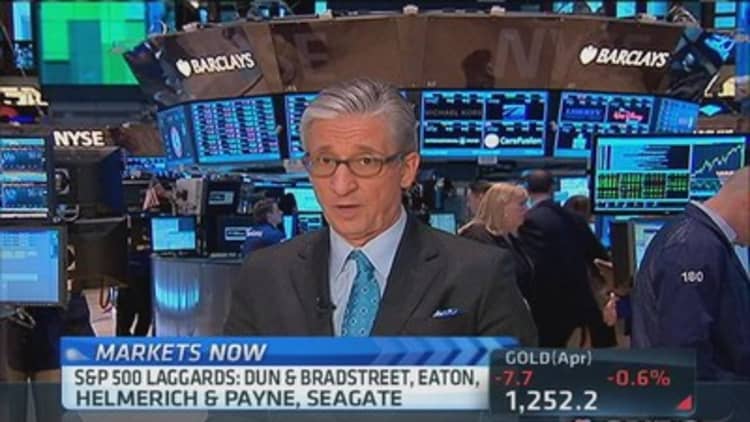For the moment, the markets are a bit calmer. While Asia was weak overnight, emerging market currencies are mostly stronger, European equities are mixed, and U.S. stocks opened in positive territory after a bloody Monday.
Many large European banks are up 1 to 2 percent and the yen—a safe-haven that is a gauge of market fears—is slightly weaker against the dollar. Yet the nervousness remains, since the weak ISM print has many fearful that the nonfarm payroll report on Friday will be weak as well.
Markets should be calmer, at least short-term as we may have overshot the downside: the ARMS index, which compares advancing to declining stocks with advancing and declining volume, is flashing oversold signals.
Meanwhile, the percentage of NYSE stocks below their 200 day moving average has moved down to its lowest levels in a year. The closed at its highest levels in over a year; VIX options traded record volume.
Elsewhere

1) It's been a mixed morning for earnings, with positive guidance from Michael Kors and YUM! Brands offset by somewhat weaker guidance from Eaton and Clorox.
2) Busy morning for exchange-traded funds (ETFs):
a) iShares is launching three currency-hedged ETFs, no doubt to try to capitalize on the phenomenal success of the WisdomTree Japan Hedged Equity Fund: the iShares Currency Hedged MSCI EAFE ETF, iShares Currency Hedged MSCI Germany ETF and iShares Currency Hedged MSCI Japan ETF.
b) Here's what might be the right product at the right time: iShares and WisdomTree are both launching Floating Rate Treasury ETFs. Last week the U.S. Treasury held its first auction of floating-rate notes. Today iShares is launching the Treasury Floating Rate Bond ETF (TFLO) and WisdomTree is launching the Bloomberg Floating Rate Treasury Fund (USFR). The iShares product tracks a new index, the Barclays U.S. Treasury Floating Rate Index.
The Treasury's two-year notes reset the interest rate they pay based on the high yield that is paid on the 13-week Treasury note auctions, which are usually held every Monday. If rates rise, then investors will usually receive higher rates, and vice-versa. The interest rate is determined by an index based on 13-week Treasury bills and a fixed spread on top of that.
What they offer: some protection against rising interest rates, backed by the full faith and credit of the U.S. government.
—By CNBC's Bob Pisani


